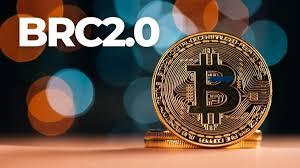Bitcoin’s role in the crypto world has long been seen as a store of value, while Ethereum led innovation with smart contracts. Now, that line is blurring. The BRC20 protocol, which originally allowed fungible tokens on the Bitcoin network, has introduced an upgrade called BRC2.0. This development could significantly expand what is possible on Bitcoin by enabling EVM-style smart contracts directly on its blockchain.

What is BRC20 and Why It Matters
BRC20 was inspired by Ethereum’s ERC20 standard and enabled token creation on Bitcoin using Ordinals and inscriptions. While it allowed meme coins and experimental assets to flourish, critics argued it lacked the advanced programmability of Ethereum.
With BRC2.0, developers can now deploy smart contracts similar to Ethereum’s, which means Bitcoin is no longer limited to “digital gold.” Instead, it can host decentralized applications (dApps), lending protocols, decentralized exchanges, and even gaming projects.
How BRC2.0 Works
BRC2.0 integrates a virtual execution layer that mirrors the Ethereum Virtual Machine (EVM). This means developers familiar with Solidity, Ethereum’s programming language, can write and deploy contracts without learning an entirely new coding environment.
- Compatibility: Existing EVM-based projects could potentially migrate or expand to Bitcoin.
- Security: Contracts benefit from Bitcoin’s robust proof-of-work security model.
- Scalability: Although Bitcoin’s block space is limited, Layer-2 solutions and sidechains can complement BRC2.0 for higher throughput.

Industry Impact
This upgrade is more than just a technical milestone. It signals:
- Competition with Ethereum: Bitcoin can now compete directly in the smart contract and DeFi space.
- Developer Attraction: EVM compatibility lowers entry barriers for developers.
- Ecosystem Expansion: More dApps, decentralized finance projects, and NFTs on Bitcoin.
Challenges Ahead
While promising, BRC2.0 will face hurdles:
- Transaction Costs: Bitcoin fees are historically high during network congestion.
- Community Resistance: Some Bitcoin purists prefer it remain a currency and store of value.
- Adoption Curve: Developers and users must test, trust, and scale the new tools.

A New Era for Bitcoin?
The launch of BRC2.0 transforms Bitcoin’s possibilities. What was once seen as a conservative blockchain is now entering a new phase of programmability, potentially opening up trillion-dollar opportunities in DeFi, NFTs, and decentralized applications. If adoption grows, Bitcoin may evolve beyond “digital gold” into a platform that rivals Ethereum on its own turf.









